Natalie Wynn, known online as ContraPoints, explores politics and philosophy through YouTube videos that feature elaborate sets, ornate costumes, and dark humor. Wynn's work uses unique and intricate methods of communication, which is best shown in her videos Pronouns and The Aesthetic. Communication is featured in the texts in three ways. Firstly, both texts discuss the communication of one's gender in social contexts and the strategy and ethics behind communicating arguments. Secondly, Wynn's communication of her ideas is heavily dependent on the rhetorical formats of the texts: dialogue in The Aesthetic and direct rebuttal in Pronouns. And thirdly, Wynn communicates differing perspectives through her various characters, costumes, and set designs, particularly through color.
In Pronouns, Wynn rebuts conservative commentator Ben Shapiro's argument that the usage of personal pronouns should be dictated by sex chromosomes. In the first half of the video, Wynn argues that one's pronouns should be largely determined by one's gendered social role. Wynn recounts her own experiences as a transwoman, and how, without telling others that she prefers “she/her” pronouns, most people refer to her as a woman anyway (Wynn, 00:06:47-00:06:53). The social role of a woman doesn't concern having specific chromosomes, but instead exhibiting the appearance, gestures, and aura typically associated with women. Thus, cisgender and transgender women effectively exhibiting these characteristics are treated the same in most social contexts. In the second half of the video, Wynn examines the relationship that psychological experience should have on pronoun usage. She discusses the performance of drag to illustrate her argument that presentation alone doesn't tell the whole story behind someone's identity (Wynn, 00:22:00-00:22:07). Some drag queens view drag as an essential part of communicating their identities, while others view drag as costumes for entertainment and nothing more. Accordingly, queens prefer different pronouns to reflect their identities, not their presentation. Wynn argues society should acknowledge others' psychological realities by using their preferred pronouns (Wynn, 00:24:21-00:24:32).
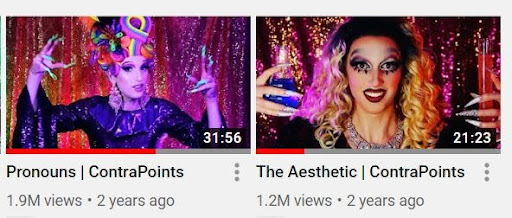
In The Aesthetic, Wynn uses the dialogue format to discuss, in her words, “What matters more — the way things are or the way things look?” (Wynn, 00:01:03-00:01:07), when trying to achieve a political goal. The two characters, Justine and Tabby, although not fully representing Wynn individually, come together to try to form a consensus — one that represents Wynn's complete stance. Justine believes that “politics is aesthetics” (Wynn, 00:05:02-00:05:04) and that the only way to achieve a political goal is to fully embrace and exploit this “truth,” even if it means not standing up to oppressive systems. Tabby believes that embracing the idea that “politics is aesthetics” is not only morally wrong, but fascist (Wynn, 00:05:04-00:05:15), and that the only way one should try to achieve a political goal is to actively tear down oppressive institutions. This dialogue focuses on a familiar example: how transgender women should present themselves. Justine argues that, in order to communicate their womanhood, avoid being ostracized, and be taken seriously by others, trans women need to perform an archetypal femininity (Wynn, 00:07:40-00:09:58). Tabby, on the other hand, argues that performing a false hyperfeminine identity not only harms gender non-conforming women, but sacrifices ethical principles by colluding with an oppressive system (Wynn, 00:09:38-00:09:55).
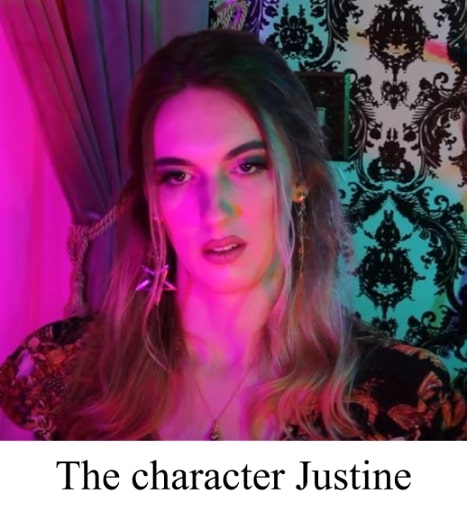
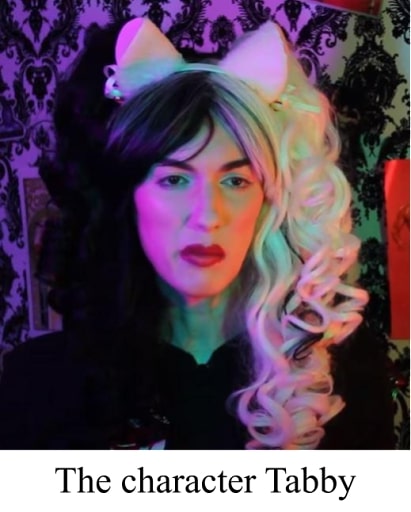
Although these two texts may at first seem like they are discussions of two different issues, in reality, both The Aesthetic and Pronouns concern the same opposing themes regarding communication: appearance and truth. To understand this, we need to further examine how Wynn communicates her ideas in these texts.
The Aesthetic is a dialogue, where two or more characters oppose each other in an artificial debate. Tabby represents the argument that the way things are matters more than how things look, and Justine represents the converse. The text is a representation of an inner dialogue: both characters and arguments are caricatures of aspects of Wynn. In Pronouns, Wynn admits that she didn't intend for either argument to win in The Aesthetic (Wynn, 00:18:29-00:18:42). Wynn believes each side has their merits in specific situations, like how gender is perceived differently in intrapersonal circumstances than in interpersonal ones, and so she argues different attitudes are needed for each circumstance (Wynn, 00:22:28-00:22:50).
Although not using the dialogue format, Wynn still presents two different arguments in Pronouns. Wynn's first argument, that pronoun usage is dictated by social roles that people can perform. She believes this argument is the more convincing of the two (Wynn, 00:18:41-00:18:57), so she places it first so that viewers are not turned off by a viewpoint outside what they are willing to consider. This argument, along with where it lies in the video, aligns with Justine's argument in The Aesthetic: favoring appearance above truth. The argument that Wynn presents in the second half of the video is that gender is more complicated than appearance. She focuses on the psychological elements of gender, but believes that before transitioning into the role of the gender you identify with, your status with that gender is “hypothetical” (Wynn, 00:22:39-00:22:50). Although the psychological elements of gender may not be as convincing or as simple as social roles, Wynn believes it's still crucial to discuss (Wynn, 00:18:42-00:19:01). This argument and its placement aligns with Tabby's argument in The Aesthetic: favoring truth above appearance.
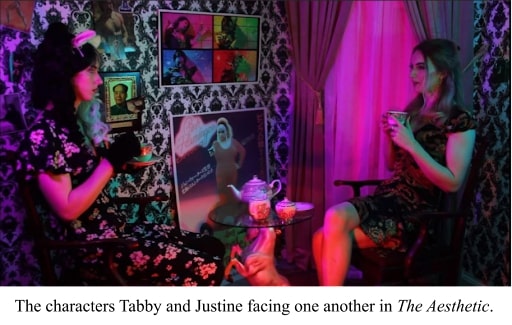
So, as we've seen, the difference between the two videos is not the debate itself, but where it lies. In The Aesthetic, Justine and Tabby face towards each other — the debate is between these two viewpoints. However, in Pronouns, Wynn faces towards the camera during both of her arguments, as the video is meant to be a debate against those who align with Shapiro's stance. We can think of these arrangements like analogous and complementary color schemes, introduced at the very beginning of The Aesthetic. Pronouns is the representation of a complementary scheme, where two opposing colors, or ideas, are presented — in this case, the ideas of Natalie Wynn and Ben Shapiro, who are fighting for different goals. The Aesthetic is the representation of an analogous scheme, where two adjacent colors, or ideas, are presented — in this case, the ideas of Tabby and Justine, who are fighting for similar goals but in different ways.
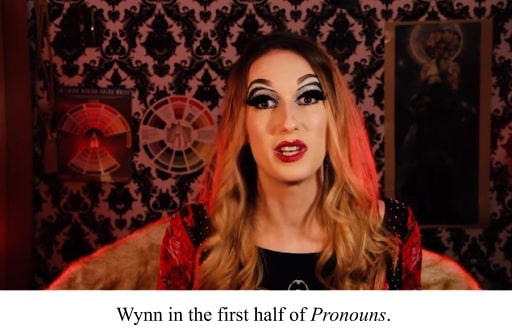
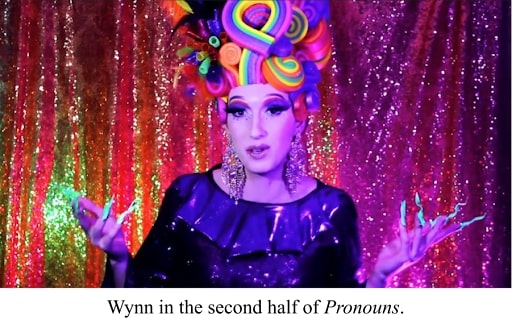
Even though Pronouns is not a dialogue, Wynn still creates a different atmosphere for each argument, which reveals how she intends to convey her message to the audience: through characters and sets, although not explicitly noted like in The Aesthetic. Her costume for the first half of Pronouns is, yes, eccentric, but warmer and much more toned down than her costume for the second half. In the first half, she occupies a living space inspired by Gothic design. By surrounding herself with older decor, she holds viewers with traditional tastes while also intriguing them enough for them to continue watching. Wynn is also illuminated by red lights, representing the stereotypical femininity she relies on for her argument. In the second half, Wynn stands in front of a glitter background of vibrant violets and scarlets, and wears enormous earrings and a monstrous wig. Wynn trusts that the audience is more willing to accept her arguments at this point in the video, so she is allowed the freedom to have fun with her presentation. It should also be noted that a wider variety of colors are used in the second half — contrasting with the first half's monochromatic color palette — which represents the wider variety of gender expressions and identities that Wynn addresses.
But this change in set and costume design also reflects Wynn's argument that gender identity is not a masculine or feminine performance, but instead the reasoning behind why one presents oneself a specific way. She uses drag to explain her point, not only logically as discussed earlier, but visually, through her costume. She acknowledges this herself: “there are trans women who are also drag queens like Peppermint, Imp Queen, or, for that matter, me. I mean, look at me! Do you think I dress like this when I go to 7/11 at 2 AM?” (Wynn 21:17). Wynn uses drag in the first half in her video too, albeit drag that is less extravagant and more traditionally feminine. Wynn performs drag to communicate the very idea that gender identity is not just male or female, blue or pink, but on a spectrum. So it's notable that during the first half, she places a literal color spectrum looming at the back of the room.
In both The Aesthetic and Pronouns, Natalie Wynn discusses ideas concerning the communication of gender and argument, but from different perspectives. She presents these perspectives through the formats of the texts, through dialogue in The Aesthetic and direct argumentation in Pronouns, and communicates different ideas through her costumes and set designs. It's this intricate composition of communication styles that draws in and persuades Wynn's audience.
Work Cited
- Wynn, Natalie. Pronouns | ContraPoints. 2 Nov. 2018, youtu.be/9bbINLWtMKI. Accessed 1 Dec. 2020.
- Wynn, Natalie. The Aesthetic | ContraPoints. 19 Sept. 2018, youtu.be/z1afqR5QkDM. Accessed 1 Dec. 2020.